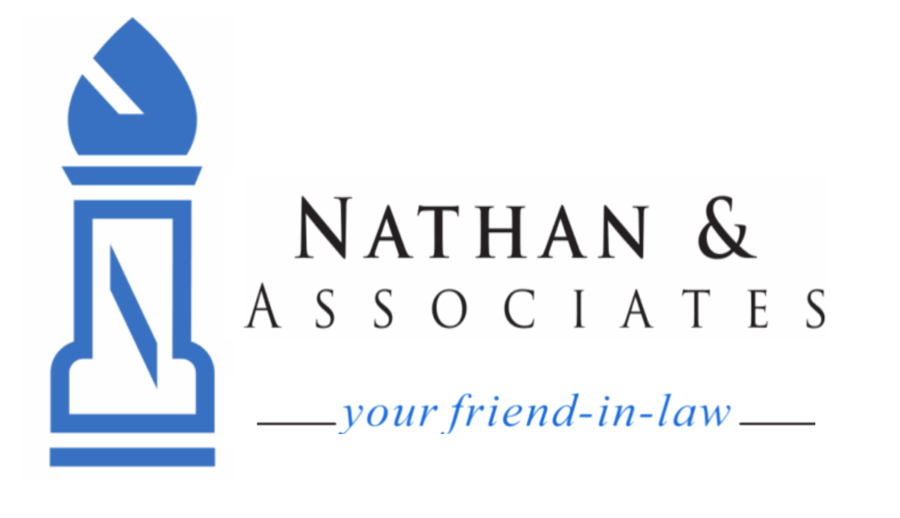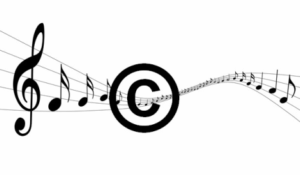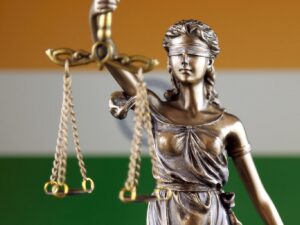INTRODUCTION
“Fair use” is an exception to copyright protection or, more accurately, a defence to a copyright infringement claim that allows limited use of a copyrighted work without the copyright holder’s permission. Fair use, developed out of common law and codified in the US constitution, ensures the unhindered flow of ideas and information in an arena where access often implies copying materials owned by someone else. Essential for creativity, innovation, and communication of knowledge, it even includes conditions enabling the use of another's materials or ideas. In various jurisdictions, fair use, known as fair dealing in some Commonwealth countries, permits limited use of copyrighted materials without express permission from rights holders, provided it falls under specific statutory limitations. In India,the equivalent is 'fair dealing,' outlined in Section 52 2 of the Indian Copyright Act, 1957, which specifies the purposes for which copyrighted works may be used relatively, such as criticism, review, reporting current events, or short quotations for teaching or inclusion in newspapers, magazines, or similar periodicals.
The 2012 amendments significantly impacted fair use concerning music, expanding fair dealing provisions to include electronic storage of works and granting performers 'moral rights' and 'media rights,' thereby enhancing their control over their performances. The changes also increased the copyright term for sound recordings from 50 years to 60 years,improving the copyright law of India with international standards while keeping in mind the appropriate balance between copyright protection and public availability of cultural materials. 4 The fair dealing provisions aim to balance the rights of creators and the public interest, adapting to technological advancements and the evolving global copyright landscape.
This article will discuss the challenges and controversies surrounding the fair use of
copyrighted material in hip-hop and electronic music production. It will also discuss landmark copyright infringement cases and fair use defences in music sampling and remix culture. Finally, this article will examine the evolving legal standards, industry practices, and
creative strategies for navigating fair use disputes in the music industry.
1 Anuja Saraswat, Music Sampling And The Defence Of Doctrine Of Fair Use, MONDAQ, (Jun. 29, 2024, 3:41PM), https://www.mondaq.com/india/copyright/1158044/music-sampling-and-the-defence-of-doctrine-of-fair-use
2 The Copyright Act, 1957, §52, No. 14, Acts of Parliament, 1957 (India)
3 Anuja, supra note 1 at 2
4 Joy Butler, Music Licensing: What is Considered Fair Use?, COPYRIGHT CLEARANCE CENTRE, (Jun. 29,
2024, 3:45 PM), https://www.copyright.com/blog/music-licensing-fair-use/
CHALLENGES AND CONTROVERSIES SURROUNDING FAIR USE OF COPYRIGHTED MATERIAL IN HIP- HOP AND ELECTRONIC MUSIC PRODUCTION
The challenges and controversies surrounding fair use of copyrighted material in hip-hop and electronic music production are multifaceted and deeply ingrained like these genres. Hip-hop and electronic music are built on the foundation of sampling, where artists take snippets of existing tracks and transform them into new creations. 5 This practice, while essential to the creative process, often leads to legal disputes over whether such uses qualify as fair use. One of the primary issues is the ambiguity surrounding what constitutes fair use in these contexts. Artists may believe using a short sample falls under fair use, especially if they alter it significantly or use it for non-commercial purposes. However, copyright holders often argue that any unauthorised use of their work is infringement, regardless of the extent or nature of the transformation.
The problem got more prominent due to increased use of social media and digital platforms, where music can be easily shared and remixed. Platforms like YouTube, Instagram, and TikTok have become hotbeds for user-generated content, often including unlicensed samples. While some uses might be considered fair dealing under standards for criticism, review, or private use, many others cross into infringement territory. Automatic content-recognition technologies employed by these platforms to police uploaded content add another layer of complexity. These systems, designed to protect copyright, often fail to interpret fair use accurately and potentially restrict creativity by taking down content that might actually be legally permissible.
Further, the rise of mashups, where producers combine elements from multiple songs to
create entirely new tracks, has led to numerous lawsuits. Artists and record labels typically
view these mashups as apparent infringements, while producers argue that they are making
new, transformative works under fair use.
In the case of Super Cassettes Industries Ltd v. MySpace Inc 7 , the Delhi High Court initially Jai Vignesh K, Doctrine of Fair Dealing in Indian Copyright Law, SURANA AND SURANA INTERNATIONAL ATTORNEYS, (Jun. 29, 2024, 4:03 PM), https://suranaandsurana.com/doctrine-of-fair-dealing-in-indian-copyright-
law/#:~:text=A%20fair%20dealing%20with%20a,copying%20of%20the%20copyrighted%20work
Muskaan Mandhyan, What Is Fair Use Of Copyright Doctrine?. MONDAQ, (Jun. 29, 2024, 3:51 PM),
https://www.mondaq.com/india/copyright/1348352/what-is-fair-use-of-copyright-doctrine?msg=15
Super Cassettes Industries Ltd v. MySpace Inc, 2011 (47) PTC 49(Del.)ruled against MySpace for copyright infringement due to user-uploaded songs without
licenses. However, the judgment was revised, recognising MySpace's role as an intermediary without control over user content.
LANDMARK COPYRIGHT INFRINGEMENT CASES AND FAIR USE DEFENSES IN MUSIC SAMPLING AND REMIX CULTURE
The primary goal of copyright is to balance the interests of copyright owners and those of copyright consumers. Music sampling can be deemed legal if it falls under the exception of fair use or de minimis use or if a license is obtained from the original copyright owner before using someone else's work. The de minimis defence, based on the legal maxim "de minimis non-curat lex," meaning "the law does not care about trifles," holds that minimal use of copyrighted material, such as a
word or melody, should not constitute infringement. The High Court of Delhi, in India TV
Independent News Service (P) Ltd. v. Yashraj Films (P) Ltd. 9 , held that de minimis analysis
offers three key advantages:
“(i) It is a better theoretical fit for minor violations than fair use,
(ii) It is more straightforward, and
(iii) It takes less time, benefiting both parties and society.”
Factors considered in de minimis analysis include the scope and nature of the injury, the cost of adjudication, the aim of the breached legal obligation, the impact on third-party legal rights, and the wrongdoer's intent.
Before remodeling original musical work, securing copyright holders’ licenses and paying
relevant royalties is crucial to avoid legal complications. The cooperation of copyright
holders in providing the permit is essential; their reluctance can lead to copyright
infringement. 10 Mechanical licenses can be used for distributing musical works. In contrast, Creative Commons Attribution licenses allow individuals to copy, distribute, display, and
perform the copyrighted work, as well as create derivative works, provided all copyright-holding artists are properly credited. 11 Non-commercial licenses can be used for non-
commercial purposes, allowing the user to engage with the song as long as it is not for
commercial use.
Your content goes here. Edit or remove this text inline or in the module Content settings. You can also style every aspect of this content in the module Design settings and even apply custom CSS to this text in the module Advanced settings.
In the case of Gramophone Co. of India Ltd. vs Super Cassette Industries Ltd. 12 , the plaintiff offered the defendant a licensing fee for creating audio cassettes using the original sound recording of Ganapati Aarti. Despite the defendant's reluctance to grant a license, they produced the tapes and were found guilty of copyright infringement. The Indian Copyright Act does not explicitly require licenses for music sampling, remixing, or mashups, unlike cover versions, which do not need special permission from the artists. However, mashups, music sampling, and remixes are considered adaptations of original musical works and do require such permissions. In the Indian Performing Right Society Ltd (IPRS) v. Eastern India Motion Picture Association (EIMPA) 13 case, the Supreme Court ruled that the copyright in a film’s soundtrack might belong to the film producer rather than the joint copyright of the composer and lyricist. This decision has substantial implications for music copyright administration and licensing in the film industry. Further, this case highlighted the collaborative nature of film production and the varying interests in copyright ownership while also limiting the rights of composers and lyricists against film producers. In Saregama India Ltd. v. Next Radio Ltd, 14
the Calcutta High Court affirmed the need for radio stations to obtain licenses from copyright owners, reinforcing the statutory licensing regime.
In the US case US Capitol Records v. MCA Inc. 15 even minor sampling without clearance was deemed infringement, a strict stance echoed in Bridgeport Music, Inc. v. Dimension
Films 16 . Conversely, Indian fair dealing provisions consider the amount and substantiality of the portion used. The European Union case Infopaq International A/S v. Danske Dagblades Forening 17 held that even short excerpts could be protected if sufficiently original, reflecting a more purist approach. These international comparisons show that while global standards influence Indian copyright law, local judicial interpretations and cultural contexts play a crucial role. Understanding these nuances is essential for navigating the globalised regulation of intellectual property rights in the digital age.
11 Jai, supra note 5 at 3
12 Gramophone Co. of India Ltd. vs Super Cassette Industries Ltd, 1995 (33) DRJ 333
13 Indian Performing Right Society Ltd v. Eastern India Motion Picture Association, 1977 AIR 1443
14 Saregama India Ltd. v. Next Radio Ltd, LL 2021 SC 513
15 US Capitol Records v. MCA Inc, 1962 Trade Cases 70,459.
16 Bridgeport Music, Inc. v. Dimension Films, 410 F.3d 792 (2005)
17 Infopaq International A/S v. Danske Dagblades Forening, [2012] BUS LR 102
EVOLVING LEGAL STANDARDS, INDUSTRY PRACTICES, AND CREATIVE STRATEGIES FOR NAVIGATING FAIR USE DISPUTES IN THE MUSIC INDUSTRY
The Indian Copyright Office (ICO), Indian Performing Right Society (IPRS), police,
judiciary, and customs authorities all oversee fair use compliance. As the central authority for regulating copyright law in India, the ICO deals with copyright registration, enforcement, awareness promotion, administration, and policy-making. 18 The IPRS, a private, non-governmental body, represents composers, lyricists, and music publishers, collecting royalties and enforcing the law through litigation. The police act on copyright infringement complaints, while the judiciary adjudicates these cases, issuing cease and desist orders, fines, and, in severe cases, imprisonment. Customs authorities also have the power to halt the clearance of suspiciously infringing goods under the Intellectual Property Rights (Imported Goods) Enforcement Rules, 2007.
Despite the strong legal framework and multiple enforcement agencies, practical enforcement of fair use provisions in music faces significant challenges. Poor understanding of fair use provisions among stakeholders, advancing technologies blurring the lines between permissions and infringement, lack of resources for rights holders, overlapping international jurisdictions, and ambiguities in the law all contribute to the difficulty of enforcing fair use.
Many users and creators are unaware of their rights to make specific uses without permission.Additionally, the fast pace of the music business and globalisation complicates enforcement across borders, with different countries having varying interpretations of copyright law. Ambiguities in the Indian Copyright Act lead to inconsistent enforcement and judicial decisions, causing uncertainty for industry actors.
To improve enforcement, authorities and policymakers must expand the workforce andresources of enforcement agencies, enhance copyright education, and develop international cooperation. Legal frameworks need to adapt to technological changes. Advances will influence the future of fair use in the Indian music industry in technology such as artificial
Animesh Pratap Singh and Dr. Lakshmi Priya Vinjamuri, Intellectual Property Rights in India: A Study with Special References to Music Industry, 7(3) IJLMH 2237, 2237-2254 (2024) 19 ibid
Verma, M., Mukherjee, T., & Kurup, V. G. (2017). Intellectual Property Rights and Indian Entertainment Industry :AnOverview. https://www.researchgate.net/publication/318122730_Intellectual_Property_Rights_and_I
ndian_Entertainment_Industry_ An_Overview
21 ibid
intelligence (AI) and blockchain. 22 AI-driven musical creations, remixes, and music analyses
present new challenges for copyright and fair use, as AI can create compositions resembling
those made by humans. The fair use analysis must consider whether AI-authored pieces are
sufficiently creative or transformative. The automatic content recognition systems serve to
support AI, although they may help identify possible violations and, unfortunately, may cause cases of over-enforcement and misidentifying fair use for comment and criticism or parody.
Blockchain technology has the potential to revolutionize copyright management with
transparent and distributed registries of ownership and usage rights. Blockchain-based
accounting and royalty distribution systems could enable more precise tracking of music
usage and automated royalty payments based on smart contracts. However, the rigidity of smart contracts may complicate the determination of fair use in subtle cases. These technological advancements offer both opportunities and challenges, requiring ongoing debate and adaptation within the industry.
CONCLUSION
The landscape of fair use in music copyright is evolving amidst the challenges posed by
sampling, remix culture, and technological advancements. While legal frameworks like fair dealing provisions in India and fair use in the US attempt to balance creators' rights with public access and innovation, the complexities of enforcement remains complex. Issues such as ambiguous laws, technological advancements like AI and blockchain, and globalized enforcement necessitate continual adaptation and cooperation among stakeholders. The future of fair use in the music industry depends on embracing these challenges as opportunities for legal and technological innovation, ensuring that copyright law continues to facilitate creativity while protecting the rights of all involved parties.
Dr. Purnima Joshi, A Study of Management of Intellectual Property RightsSpecial Reference to Music
Industry, 7(6) IJMIE 45, 45-49 (2017)Animesh, supra note 18 at 6 ibid





0 Comments